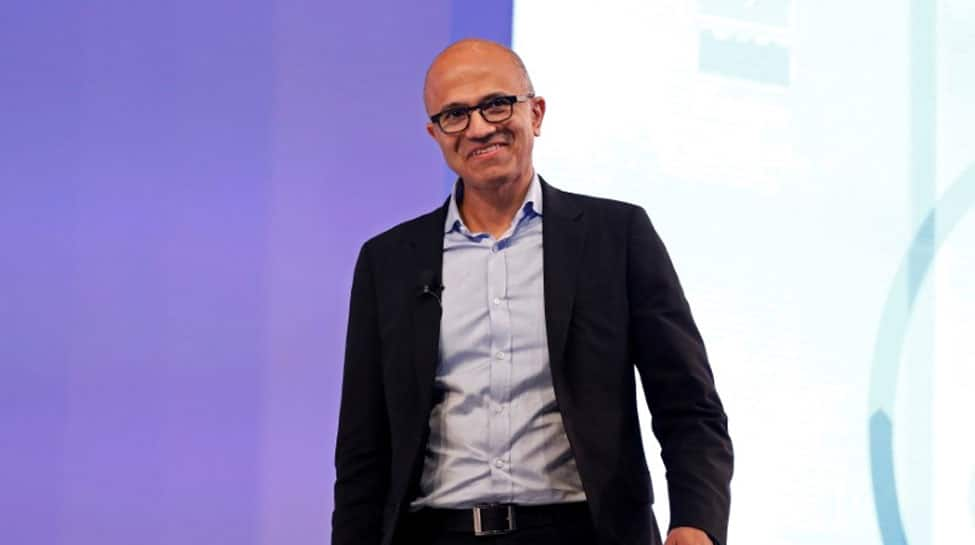Business
Ultra-wealthy millennials and Gen Zers to displace baby boomers by 2040

Young cheerful lady enjoying on poolside. Resting in spa hotel in pine forest in summertime. Swimming pool in tourist resort. Joyful woman on vacations, female wellbeing.
Oleg Breslavtsev | Moment | Getty Images
A version of this article first appeared in CNBC’s Inside Wealth newsletter with Robert Frank, a weekly guide to the high-net-worth investor and consumer. Sign up to receive future editions, straight to your inbox.
The ranks of the world’s ultra-wealthy continue to swell, with the number of individuals worth at least $30 million surging to 510,810 at the end of June, up 5.4% since the beginning of the year, according to a new report by wealth intelligence firm Altrata.
Millennials and members of Generation Z only make up 8% of this class, which boasts combined net worth of $59.8 trillion, per Altrata. Baby boomers command the lion’s share of nearly 45% and people born in 1945 or earlier represent another 22%.
However, this dynamic is set to change rapidly thanks to the great wealth transfer, with Altrata estimating that the millennials and Gen Z constituents will make up more than a third of the ultra-wealthy population by 2040. Meanwhile, the share held by baby boomers and the silent generation will shrink from more than two-thirds to a fifth, and Generation X will take the lead with 45%.
This generational shift has far-reaching implications for firms that cater to the ultra-rich, from wealth managers to art dealers as well as nonprofits, according to Altrata’s Maya Imberg.
“They really have to think ahead because 15 years is not actually that far away,” said Imberg, head of thought leadership and analytics at Altrata. “Are environmentally friendly cars going to become more critical? Are they going to be as into yachting? All of these preferences are going to have a really big impact on the bottom line of businesses.”
Part of this rapid growth is due to the increased use of trusts and family offices over the past decade to pass wealth to heirs at an earlier age, Altrata’s Maeen Shaban told Inside Wealth.
“That means younger people are able to access that wealth. They don’t have to wait for the principal to pass away,” said the director of research and analytics.
Imberg said the most “stark” difference between generations lies in the industries where they made their wealth and the ones where they currently work. For most ultra-wealthy individuals, especially younger ones, these two are one and the same, according to Imberg.
But 15% of the next generation derives their wealth from hospitality and entertainment, while their older peers index below 5%. The next generation is also the most likely (just under 9%) to have technology as their industry of focus, which is twice the share of baby boomers. While banking and finance is the most popular industry across all generations, the share for the youngest is just under 20%, 10 percentage points lower than the average.
These differences, according to the report, reflect tech companies minting millionaires, as well as influencers and celebrities monetizing social media.
Other nuances can largely be attributed to age, such as the next generation listing philanthropy as a lower priority, as well as real estate and luxury assets making up nearly a quarter of their wealth. These young entrepreneurs are typically running businesses that may be illiquid, leaving less time and cash to spend on philanthropy, Imberg said.
They also have a lower average wealth with a median of $44 million (versus $57 million for baby boomers), so real estate often makes up a larger chunk of their portfolios, according to Shaban. And while baby boomers are downsizing, the next generation is in the mood to spend, he said.
“They are in more of an acquisition state than older generations. They’re still buying things. For some of them, they’re buying the first house, their first big car, their first vacation home, or whatever,” he said. “It’s a different life cycle.”
Business
PM Kisan 21st Installment Live Updates: PM Modi To Release Rs 18,000 Crore To Nearly 9 Crore Farmers

PM Kisan 21st Installment Live Updates: The wait for the PM Kisan Samman Nidhi’s 21st installment is now going to be over today, after Prime Minister Narendra Modi is set to release the next tranche of Rs 2,000 shortly at an event in Coimbatore, Tamil Nadu.
“The prime minister will release the 21st installment of PM-KISAN on November 19, 2025, in Coimbatore, Tamil Nadu,” according to PM Kisan’s portal.
As per the government data, Rs 18,000 crore will be transferred to nearly 9 crore farmers nationwide. Combined with state schemes, many farmers are receiving additional income buffers ahead of the agri season.
“This instalment comes at a crucial moment: rising input costs, mandi price volatility, and liquidity gaps continue to challenge small and marginal farmers. A deeper lens on how direct benefit transfers are influencing farm decisions, post-harvest management, storage choices, and credit dependency could make for a compelling industry story,” said Amith Agarwal, co-founder and CEO of StarAgri Warehousing & Collateral Management.
PM Kisan: How To Check Beneficiary Status?
1. Visit the official PM Kisan portal: https://pmkisan.gov.in
2. On the homepage, under the ‘FARMERS CORNER’, click on ‘Beneficiary List’.
3. Enter your state, district, sub-district, block, and village.
4. Click ‘Get Report’ to view the list of beneficiaries in your village.
Business
Satya Nadella To Visit India From December 10–12; To Meet Top Leaders, Discuss AI Push

New Delhi: Microsoft Chairman and CEO Satya Nadella will begin a three-day visit to India on December 10.
The India-born tech leader will travel to Delhi, Bengaluru, and Mumbai as part of his tour, during which he is expected to meet Prime Minister Narendra Modi, IT Minister Ashwini Vaishnaw, and other senior government officials.
Nadella will start his visit in Delhi on December 10, move to Bengaluru on December 11, and conclude in Mumbai on December 12. This will be one of his several visits to India in recent years as Microsoft continues to expand its presence and strengthen its position in the fast-growing cloud and AI services market.
During his earlier visit in January this year, Nadella had announced a $3 billion investment to build cloud and AI infrastructure in India and to support skilling programmes.
At that time, he said India was becoming a global leader in AI innovation and stressed that Microsoft wanted to help make the country “AI-first.” The company also said it would train 10 million more Indians in essential AI skills by 2030.
Microsoft had already exceeded its 2025 target by training 2.4 million people within a year, with a majority of participants coming from Tier-II and Tier-III cities and 65 per cent of them being women.
Rival Google has also announced a major push in India, with a $15 billion investment to set up a state-of-the-art AI hub in Visakhapatnam.
The build-up to Nadella’s visit saw another important meeting on Tuesday, when Commerce and Industries Minister Piyush Goyal met Lisa Monaco, President of Microsoft Global Affairs.
After the meeting, Goyal posted on X that the discussion focused on Microsoft’s continued engagement in India and its support for AI-led innovation and infrastructure development.
He added that both sides also explored ways to strengthen the India–US partnership in AI, digital trade, and workforce skilling to ensure inclusive and sustainable growth.
Business
Buy or sell: Stock recommendation by brokers for November 19, 2025 – The Times of India

Jefferies has initiated its coverage of WeWork India with a buy rating and a target price of Rs 790. Analysts said that the company is the largest flexible workspace operator by revenues in India. At about 17% compounded annual growth rate (CAGR), flexible workspace stock is growing at two times the pace of office stock, with room for further penetration. They said WeWork’s premium positioning helps command higher average revenue per member and margins than peers.Motilal Oswal Securities has initiated its coverage of PB Fintech with a neutral rating and a target price of Rs 2,000. Analysts expect PB Fintech to post a strong FY25-FY28 revenue, earnings before interest, taxes, depreciation, and amortisation (EBITDA) and profit after tax (PAT) CAGR of 35%, 156% and 56%, respectively, after factoring in a strengthening position in under-penetrated credit and insurance industries. However, they believe the stock is fairly valued, and all positives are priced in at current levels. Any possibility of commission restructuring by insurance companies due to the loss of input tax credit post GST exemption poses a key risk for the company’s top-line growth.Morgan Stanley has an overweight rating on Eternal (formerly Zomato) with the target price at Rs 427. They believe Eternal has the best risk-reward matrix and investors would use the current weakness to accumulate the stock. Like Eternal’s strategy of doubling down on customer market share as wallet share expansion can follow later. Theyassume a stress case of higher aggression could mean push out of profitability but this is not a game changer. They are assuming a stress case scenario where the stock would bottom out at Rs 280 – Rs 285.UBS has a buy rating on Max Healthcare Institute with the target price at Rs 1,550. Analysts expect the company’s brownfield capacity addition to drive growth and earnings. The management said that it recently commissioned a Mohali facility including an oncology facility. It’s also commissioning a facility at Nanavati hospital inMumbai.Also the construction activity at other new hospitals is progressing well. The management indicated that the issues related to cashless service for insurance patients has been resolved and mentioned there was no/only limited impact as patients shift from insurance to cash in such instances.Nomura has a neutral rating on Oil India with the target price at Rs 430. Analysts said the company’s July-Sept quarter was a soft one as volumes were impacted by external factors. The expansion work at Numaligarh Refinery was on track, with first crude intake expected next month and a meaningful volume uptick by the July-Sept quarter ofnext year. Analysts cut Oil India’s FY26 and FY27 profit estimates by 37% and 18%, respectively, to reflect: Lower gas sales volume, lower crude price realizations, higher depletion & depreciation expenses, and sharply higher exploratory write-offs and impairments.
-

 Tech1 week ago
Tech1 week agoFrom waste to asset: Turning ethanol production CO₂ into jet fuel
-

 Tech4 days ago
Tech4 days agoNew carbon capture method uses water and pressure to remove CO₂ from emissions at half current costs
-

 Politics5 days ago
Politics5 days agoBritish-Pakistani honoured for transforming UK halal meat industry
-

 Sports3 days ago
Sports3 days agoTexas A&M officer scolds South Carolina wide receiver after touchdown; department speaks out
-

 Business4 days ago
Business4 days agoThese 9 Common Money Mistakes Are Eating Your Income
-

 Tech1 week ago
Tech1 week agoSecurity flaws in portable genetic sequencers risk leaking private DNA data
-

 Business4 days ago
Business4 days agoWhat’s behind Rachel Reeves’s hokey cokey on income tax rises?
-

 Politics6 days ago
Politics6 days agoInternet freedom declines in US, Germany amid growing online restrictions












